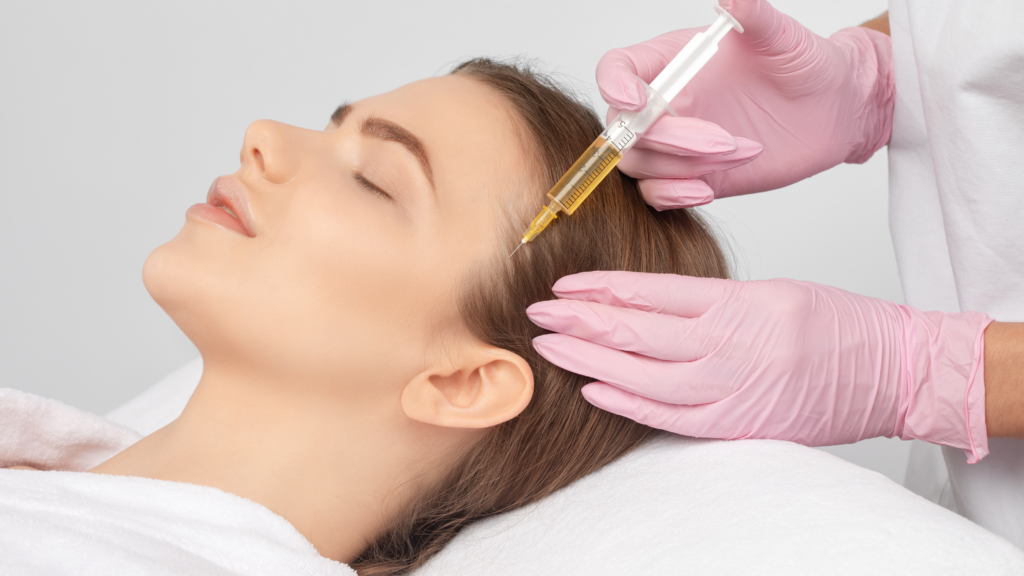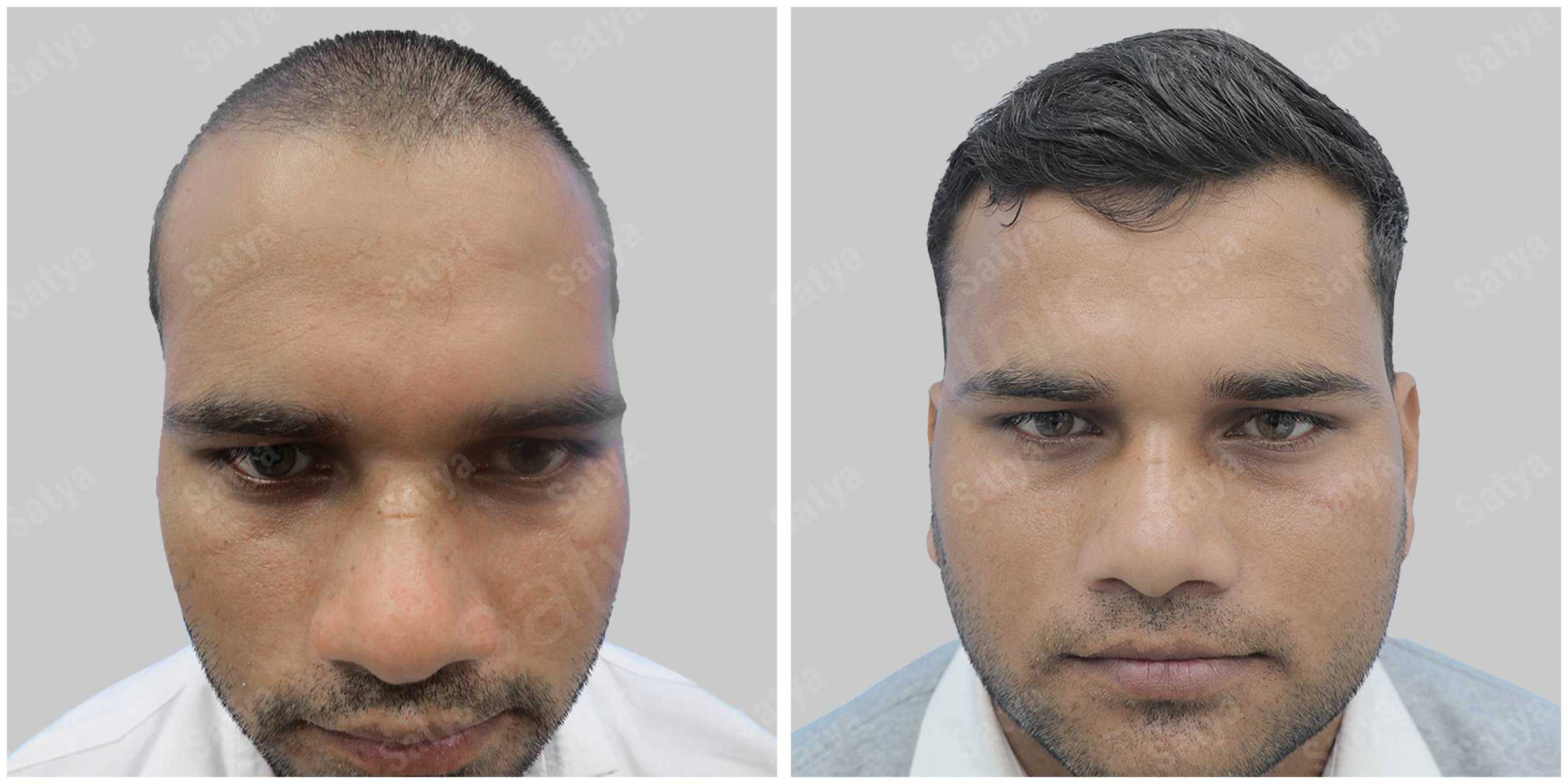A medical procedure known as platelet-rich plasma therapy (PRP) may be able to use the platelets in our blood to encourage the creation of new hair.
The yellowish liquid called plasma, which is found in blood, transports platelets around the body. Furthermore, platelets are essential to the body’s natural healing process. Platelet-derived proteins prolong the growth phase of the hair cycle, improve blood circulation, and nourish the hair. Thus, during the treatment, the injection of platelet-rich plasma into the scalp may awaken dormant hair follicles, promoting the growth and thickness of new hair. PRP therapy may even be able to lessen scalp inflammation, which is one of the factors contributing to hair loss, according to research.
Because of this, some medical experts think PRP therapy offers potential benefits for treating illnesses like alopecia. There isn’t much clinical evidence that PRP therapy is effective for hair regrowth, despite the NHS occasionally using it to treat torn ligaments and muscles to hasten the healing process. Thus, additional study is undoubtedly required to understand the advantages and effectiveness.
Procedure for PRP therapy
The procedure for PRP therapy is not too complex. Let’s examine the procedure in more detail, including how the blood is drawn, separated, and injected.
1. Taking a blood sample
Usually, from your arm, your blood is taken out and put into a centrifuge. The platelet-rich plasma is separated from other components by rotating the blood at high speeds in this machine.
2. Dividing and getting ready the blood
Your blood will be divided into three layers after around ten minutes on the device. Among them are:
- Red blood cells: The bottom layer of your blood is made up of red blood cells, which are in charge of distributing oxygen around your body.
- Platelet-poor plasma: This intermediate layer has a lower amount of platelets than the uppermost layer.
- Platelet-rich plasma: This uppermost layer is high in growth factors, platelets, and other health-promoting elements that can aid in the healing process.
You will naturally want the platelet-rich plasma, which will be taken up into a syringe.
3. Using the platelet-rich plasma injection
To minimize any pain or discomfort, the scalp may be given a numbing lotion or a local anaesthetic. After that, a tiny needle will be used to inject the platelet-rich plasma into the problematic areas.

The dangers associated with PRP therapy
Like any medical process, PRP therapy is generally regarded as safe, but there are some potential risks and things to keep in mind. Possible side effects include:
Infection:
There is always a risk of infection when a medical operation is carried out or the skin is punctured. However, risk can be decreased by selecting a reputable clinic that upholds hygienic standards and sterile procedures.
Pain and discomfort:
Because PRP therapy involves injections, the injection site may experience temporary pain or discomfort.
Tissue harm:
PRP injections have the rare potential to cause tissue damage, including blood vessel or nerve damage. By ensuring that the injections are given by a qualified and experienced healthcare provider, this risk can be reduced.
Allergy:
Although platelets derived from the patient’s blood are used in PRP therapy, there is a slight possibility of allergic reactions, particularly to the anaesthetic. Before the operation, patients should disclose to their healthcare provider any known allergies or sensitivities.
Scarring:
Although rare, the formation of fibrous tissue as a result of the body’s healing reaction to the PRP injections may cause damage or alter the texture of the tissue.
What is the price of PRP therapy?
Several factors, such as your location, the clinic you select, and the part of your body you wish to treat, might affect the price of PRP therapy in Delhi.
It is advisable to make contact with individual clinics or healthcare providers to ascertain the precise cost and any marketing incentives. They can provide you with all the information and choices.

The PRP therapy alternatives for restoring hair loss
Hair replacement
Hair transplant techniques are not limited to the scalp; they can even involve the beard and eyebrows! You can create larger, more beautiful locks that are meant to last a lifetime with procedures like beard and eyebrow transplants. Both follicular unit extraction (FUE) and follicular unit transfer (FUT) hair transplant techniques are available at FUE clinics. See our guide for all the information you require regarding transplantation process procedures to learn more. Or, schedule a free consultation with no strings attached. Our knowledgeable staff will assist you in understanding the process and determining if you’re a good fit.Minoxidil
An over-the-counter drug called minoxidil, occasionally referred to as regaine, is used to treat alopecia. By regularly applying it to the scalp, you can promote growth and lessen thinning or balding by improving blood flow while providing nutrients to the hair roots. Just keep in mind to speak with your doctor before applying any topical treatment, especially if you have underlying medical disorders or skin problems.Finasteride
Finasteride, which is sold under the brand name Propecia, is an oral drug that may help men who suffer from hair loss. It functions by reducing the synthesis of the hormone dihydrotestosterone (DHT), which is connected to male pattern baldness. For men, it may encourage hair growth and slow down hair loss; however, it is often ineffective for women. It is recommended to speak with your doctor if you are thinking about taking finasteride so you can learn about the possible benefits as well as any dangers or side effects.A nutritious, well-balanced diet
Eating a balanced diet is essential for promoting the growth of good hair. According to Healthline, it’s critical to consume adequate protein and iron because a shortage can impair the health and development of hair follicles. Thus, make an effort to incorporate more iron- and protein-rich foods in your diet, such as peas, almonds, and red meat.
See our recommendations for healthy hair to find out more about how to reduce hair loss naturally: Eight daily adjustments to promote growth.
Book an appointment
Consultation

Repair

Blog

Galleries









